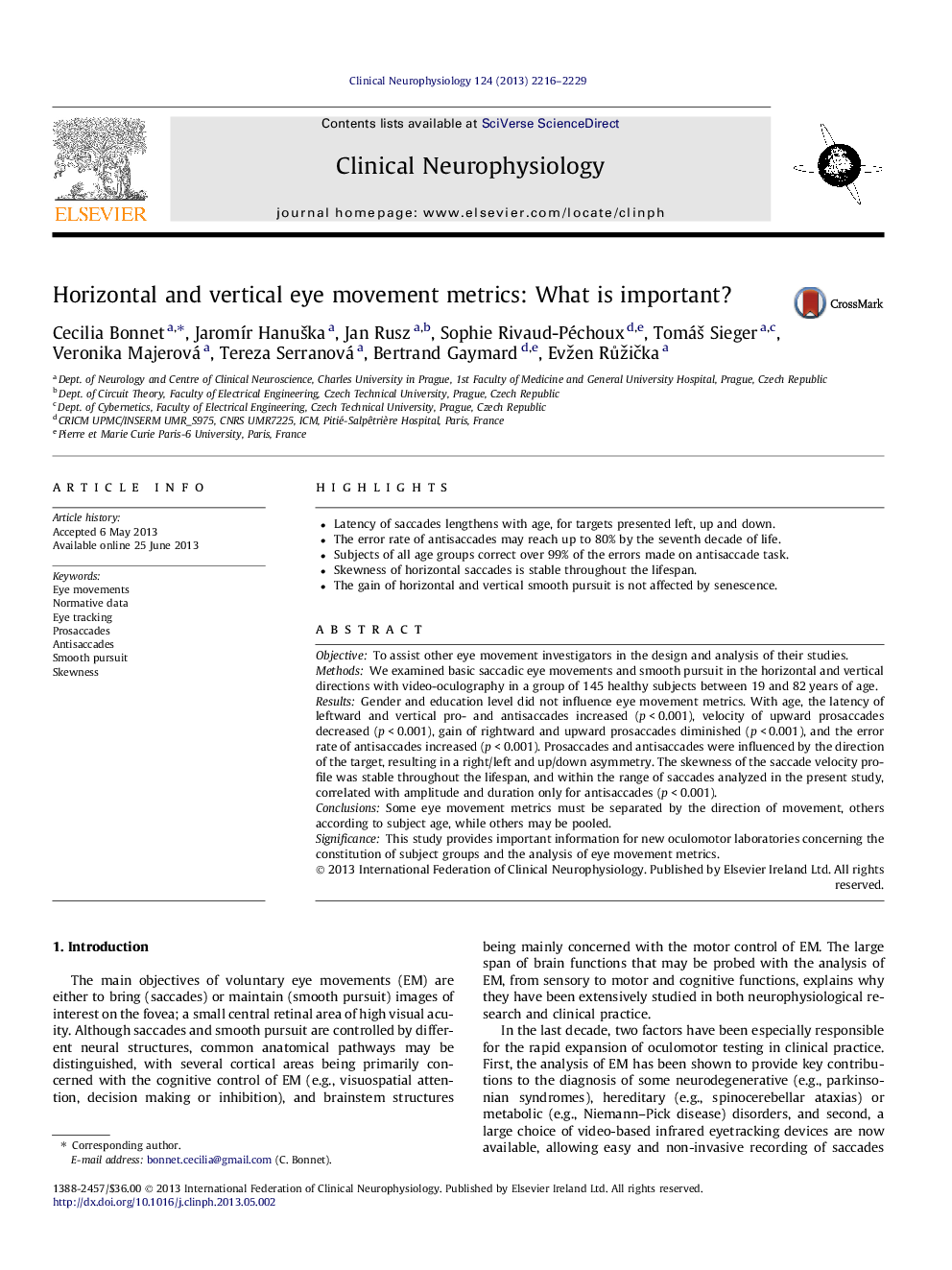| Article ID | Journal | Published Year | Pages | File Type |
|---|---|---|---|---|
| 3043324 | Clinical Neurophysiology | 2013 | 14 Pages |
•Latency of saccades lengthens with age, for targets presented left, up and down.•The error rate of antisaccades may reach up to 80% by the seventh decade of life.•Subjects of all age groups correct over 99% of the errors made on antisaccade task.•Skewness of horizontal saccades is stable throughout the lifespan.•The gain of horizontal and vertical smooth pursuit is not affected by senescence.
ObjectiveTo assist other eye movement investigators in the design and analysis of their studies.MethodsWe examined basic saccadic eye movements and smooth pursuit in the horizontal and vertical directions with video-oculography in a group of 145 healthy subjects between 19 and 82 years of age.ResultsGender and education level did not influence eye movement metrics. With age, the latency of leftward and vertical pro- and antisaccades increased (p < 0.001), velocity of upward prosaccades decreased (p < 0.001), gain of rightward and upward prosaccades diminished (p < 0.001), and the error rate of antisaccades increased (p < 0.001). Prosaccades and antisaccades were influenced by the direction of the target, resulting in a right/left and up/down asymmetry. The skewness of the saccade velocity profile was stable throughout the lifespan, and within the range of saccades analyzed in the present study, correlated with amplitude and duration only for antisaccades (p < 0.001).ConclusionsSome eye movement metrics must be separated by the direction of movement, others according to subject age, while others may be pooled.SignificanceThis study provides important information for new oculomotor laboratories concerning the constitution of subject groups and the analysis of eye movement metrics.
